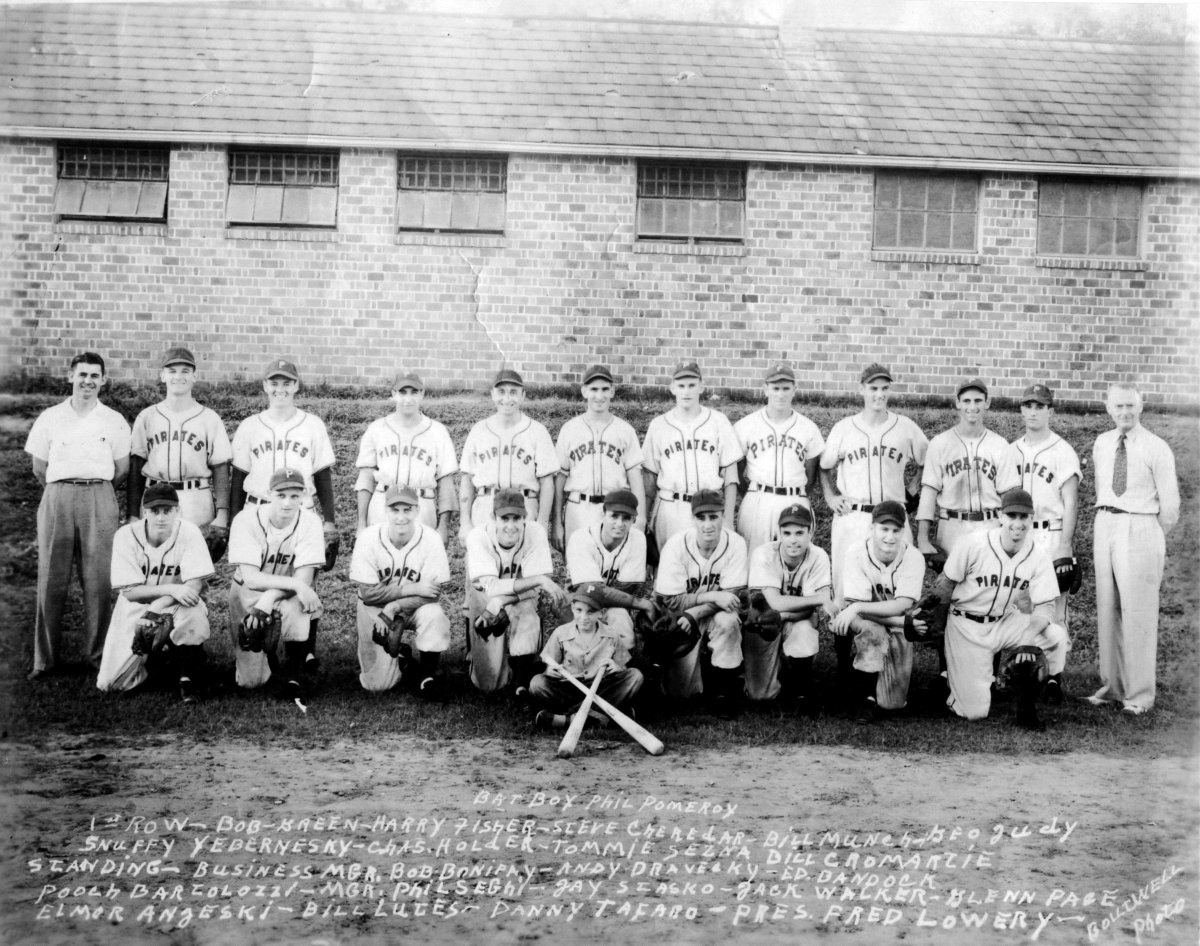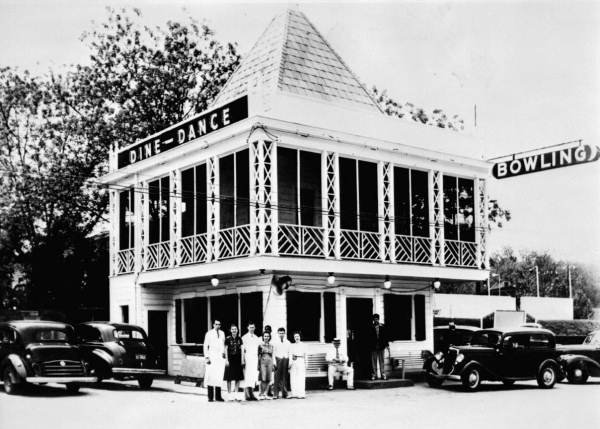A look down South Monroe Street
by J. Kent Thompson
|
Tallahassee was small town up until the 1970s. A look back at the thirties, forties and fifties reveal many iconic places that used to be on South Monroe Street near the underpass. Most are gone, only one, Shell Oyster Bar remains. Because Tallahassee was small, local athletic and entertainment activities used Centennial Park, a 24-acre site built in 1924 to celebrate the one hundredth anniversary (Centennial) of Tallahassee’s founding. The grandstand was built in 1935 by the WPA and could seat 3,000 spectators.
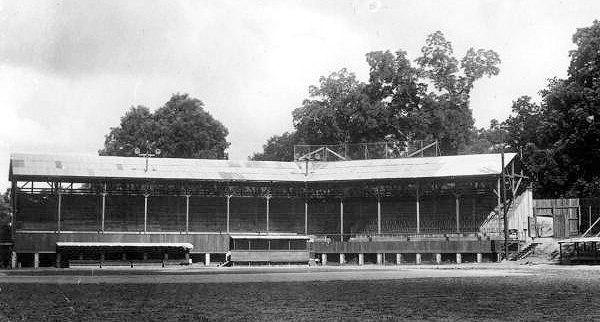 Centennial Field grandstand - Tallahassee, Florida. July 29, 1935 (Photo: State Archives of Florida)
One could come to the nearby Recreation Center to roller skate, bowl, shoot trap and watch wrestling. Many went to the ball field to watch football or the local minor or semi-pro baseball team. The Tallahassee Capitols of the Georgia-Florida League played there from 1935-42, the Tallahassee Pirates 1946-50, the Tallahassee Citizens of the Alabama-Florida League 1951, and the Tallahassee Rebels of the Florida International League 1954. The field was also used by the Kansas City Monarchs of the Negro League from 1957-61. Locals used the field for Leon High School football games and the first three seasons of FSU football. Florida A & M also played there. Through the years the field hosted Babe Ruth baseball, wrestling matches featuring Dusty Rhodes and others, as well as concerts and city softball and football leagues. It was used for Leon schools intermural competitions and politicians held fish fries and gave speeches.
The idea for a park recognizing the location where two commissioners had met to choose Tallahassee for the capital was conceived in 1971. The discovery of soil contamination caused by a nearby gasification plant put the plans on hold. It was not until 2006 when the site was cleaned up that the push for a park renewed. Funded by an additional penny sales tax in 2010, the new park, called Cascades Park, was completed in 2014. The park is also significant in that it contains Florida’s Prime meridian, a marker that is the foundation for land mapping in Florida.
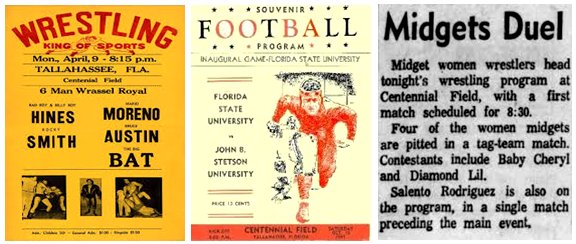
With sports came the desire for food and refreshments. Many local businesses sprung up near the field to meet the need. Many of these same places offered dining and dancing and for many years, a place to buy bootleg liquor. One must remember that Tallahassee was officially dry (it was illegal to sell liquor by the drink) from 1904 until 1967. You could always bring your own bottle (BYOB) and order set-ups (ice and mixer), but you could not legally purchase a drink.
The Green Derby
A drive down Monroe Street just past the underpass at present day Cascades Park reveals a building that today houses the Center Point Presbyterian Church. Back in its day it was the home of the Green Derby, a Tallahassee icon that offered all types of sandwiches, fountain drinks, beer and bootleg whiskey. One could order at the drive-up or come in to dine on the second story screened porch. At the Derby you could dance, bowl on the steam heated lanes , and even trap shoot on the lot outside. The owner boasted that his shop had the only concrete parking lot between Jacksonville and Pensacola.
After graduating from Leon High School, Whiddon went to the University of Florida for two years before returning to open his sandwich shop. Whiddon would also manage other businesses including The Mecca, University Grill, The Capital Gardens, and the High Hat. The Derby offered bar-b-que pork or beef, steak, chicken, sliced chicken, and grilled cheese sandwiches to name a few, they would also make special sandwiches on request. Also on the menu were hamburgers and hotdogs. Many today think of their parents or grandparents as out of touch with their generation but in truth, they were pretty hip in their times. When you made your order at the Green Derby, the young girls (your grandparents) who were working as car-hops, would shout it out in their own special language. A “wimpy, drag it” meant a hamburger with the works, drinks orders were “81” for a glass of water, “draw one” for coffee, “squeeze one” for limeade, “shoot one” for a fountain drink, and “shoot one red” for a cherry coke. A “set up” was a glass with ice, “stretch it” meant a large glass. If you wanted it in a paper cup they would say “seaboard it” and “up in the air” if it was to go. “Heavy on the hail” meant lots of ice and “cut your profit” meant no ice. A chocolate ice cream cone was a “horn of mud,” “Burn one” was a chocolate malted shake and “JD” a small chocolate milk with ice cream. Tom Carver made the sandwiches and Marion Humphries the soda’s. If you just wanted a pack of gum the order was a “Sally Rand” for Doublemint, “Country Girl” for Juicy Fruit, “Mae West” for Dentyne, “Will Rogers” for Beechnut, and “Popeye” for Spearmint. Whiddon would sell the Derby in 1946 to Mattie Aldridge. Later J.B. Barry then Harold L. “Bill” Williams owned the business. Back before 1967, when Tallahassee was a “dry” county where the sale of liquor was prohibited, one could still buy a drink at the Derby and a few other places on South Monroe. The Derby would later become the home for an exterminator and electricians business, before becoming home for the Country Flower Shop.
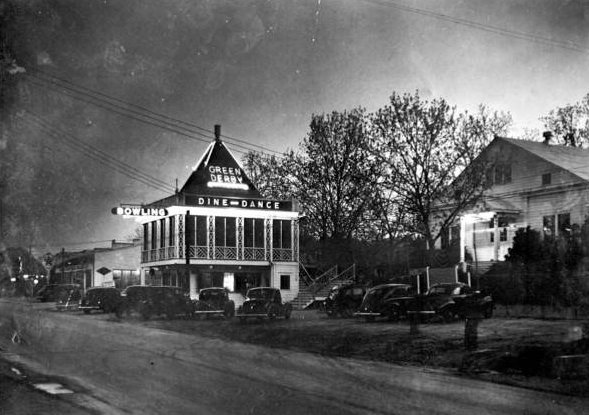 The Green Derby and Recreation Hall - Tallahassee, Florida. 1939 (Photo: State Archives of Florida)
The B & W Fruit Market
While many only remember the fruit stand next door as the B & W Fruit Market, it originally was called Tommie’s Fruit Market, opened in 1953 and owned by L.M. Jones. A torrential thundershower flooded the market for the first time in July of 1955, floating away 3,000 cantaloupes and 300 watermelons. It was the beginning of many later washouts that would flood the street.
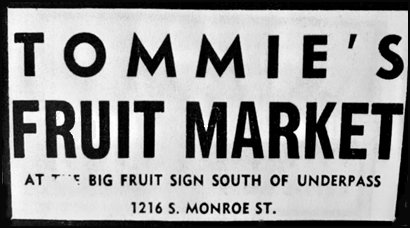
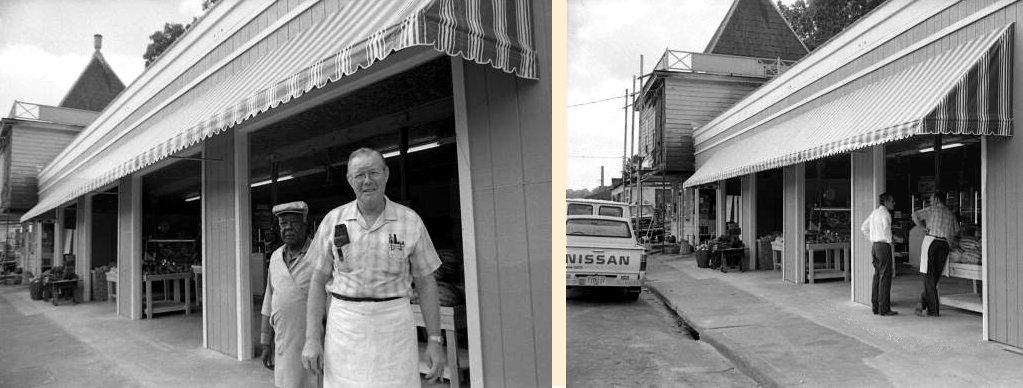
Lamar Williams and employee at the B & W Fruit Market - Tallahassee, Florida.
1984
Williams also made a good profit at B & W for the next 32 years, expanding into shipping fruit and gift baskets. It became a place frequented by local dignitaries, legislators and common folk, all looking for fresh fruit and vegetables. Through the years he suffered more flooding due to poor drainage at the bottom of S. Monroe with an October 1976 flood ruining his refrigeration units. In September of 1984 a fire gutted the market, but Williams pressed on. It was only failing health that caused Williams to lease the business in 1989 to Butch Reagan (future owner of Tomato Land). The business would continue with four different operators before closing for good in 1995. The market was demolished in 2003 after Williams sold the property to the CenterPoint church.

A Flooded B & W Fruit Market - Tallahassee, Florida.
August 12, 1964
The High Hat
The High Hat was located at 1219 South Monroe Street and was opened in 1929 by T.E Rowell. Rowell opened it as a sandwich shop to serve customers from nearby Centennial Field. It was known for its barbecue, the offer of free potato salad with each order, and bootleg whiskey. Rowell sold the business to Clarence “Buddy” Brandt in 1934. Brandt not only operated the sandwich shop but a filling station next door. In 1935 Brandt sold the business to Johnny Creel and Clyde Thompson. The business would change hands again when Malcome Tyron bought it, only to suffer a fire a few months later from a kerosene heater that badly damaged the store. He would sell the business to S.H. Woodbery who would sell it to James T. Ganey and his wife in 1946. By 1952 the High Hat was gone, converted into a used car lot.
Shell Oyster Bar
On the other side of the Green Derby stood another local icon, the Shell Oyster Bar, housed in what was the first Texaco station on S. Monroe, next to the Maner’s Garage. Maner leased out the station shortly after opening his garage in 1937. The station was originally called the Coastal Service Station and sold oysters on the half shell, the beginning of a long association with the bivalves. In 1945 the station was managed by Howard Kelly. In February of 1948 by Jack Eubanks. The Bishop and Wigman used car lot came to the site next. In 1950 South Monroe Street was widened from the railroad underpass to a point one mile south. When the lease came up in 1953 it was taken over by Victor L. “Buddy” Richardson who named it Richardson’s Texaco Service Station. Next came L.J. Sasser who returned to the original name and operated it until 1956, still selling oysters.
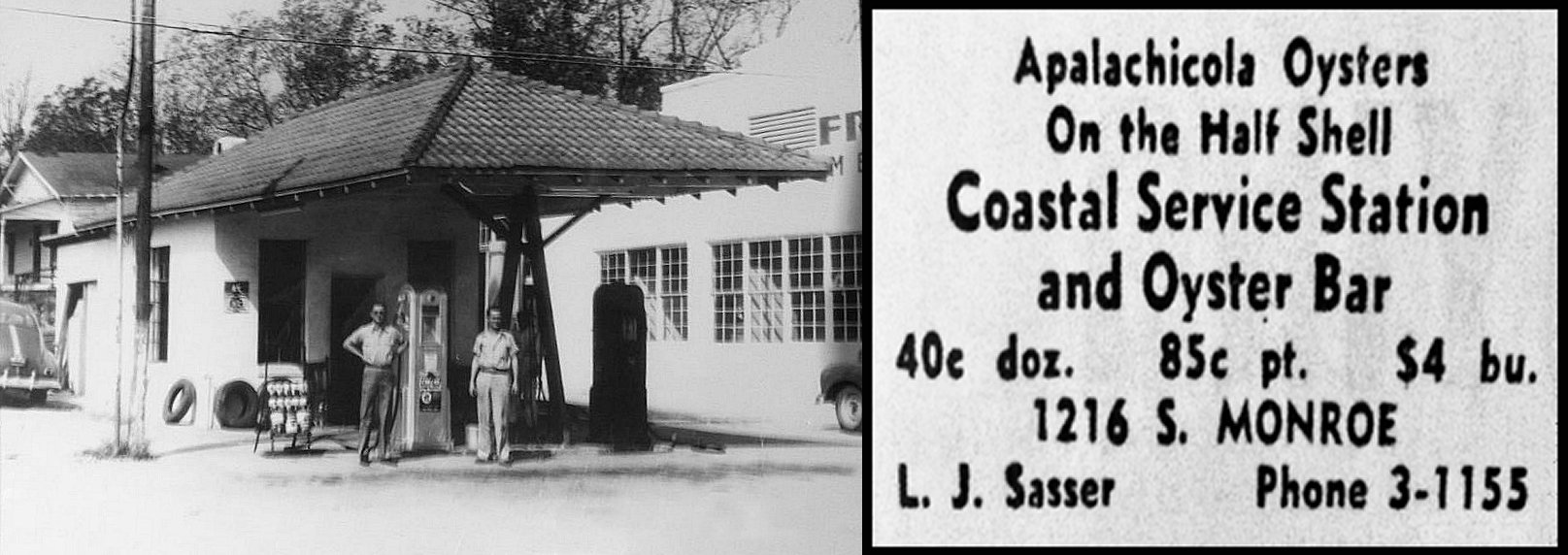 The Original Texaco Station- Howard and Oliver Kelly 1940s Advertisement for Coastal Service Station 1950s
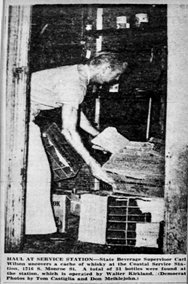 In 1958 South Monroe was again widened which necessitated the need for a wider overpass. The wider road cost the service station its gas pumps. In 1959 another State Beverage Agent raid netted manager B.B Cross who was attempting to sell 57 pints and 11 bottles of whiskey. All the while, regardless of their problems with the law, oysters on the half-shell were still being sold. In 1960 Paul M. and Jennavee McKenzie leased the old filling station for $75 a month and converted it to a full-time oyster bar calling it “Shell Oyster Bar” but many referred to it as five stools after the limited seating inside. James Frank “Buddy” Sessions and his wife Betty took over the lease in 1961, agreeing to purchase all their oysters from McKenzie Seafood. They had been running another oyster business on West Tennessee Street. It was from here that its fame began. Opened for nine months out of the year, Sessions sold his homemade cocktail and pepper sauce on site. Displayed inside was a menu that read “Exotic Oysters- topless $1.45 doz., nude $2.75 pint, clothed $10. bushel and catered $22 bushel.” 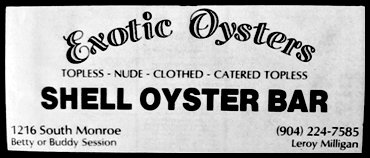 They did not sell beer, only cokes and orange soda. Sessions and his wife Betty would shuck the oysters for their hungry customers. Kenneth Wommack and Sessions later partner Leroy Milligan also shucked the tasty bivalves. Milligan once was in a “shuck-off” with Apalachicola’s own national champion Heidi Harrelson, who shucked her oyster’s from the bill side instead of the usual way from the hinged end. Heidi won in a 90 second shucking round with 27 oysters to Milligan’s 24. Milligan blamed his loss on little prior practice and from picking up one of his oysters upside down, claiming otherwise he could have beat Heidi. Sessions not only was known for his oysters, but a 20-foot avocado growing on the south side of his building. Planted in 1970, it was watered daily by draining the ice box where he kept his oysters stored. 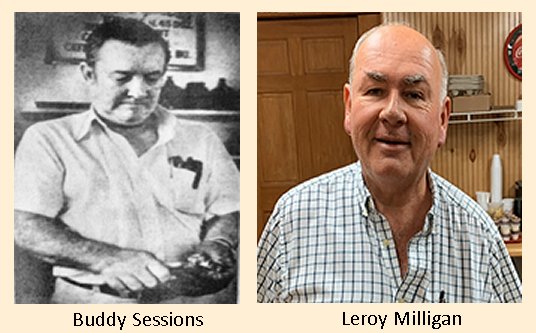 The fame of the little oyster bar grew, becoming a favorite for Governors, Legislator’s, famous movie stars, singers, and locals. Milligan became a partner in the business in 1986 and when Buddy Sessions died in February of 1991, he became the sole owner. In October of 1992 Milligan announced that they had lost their lease and the building was to be torn down to make way for a Subway Sandwich Shop. 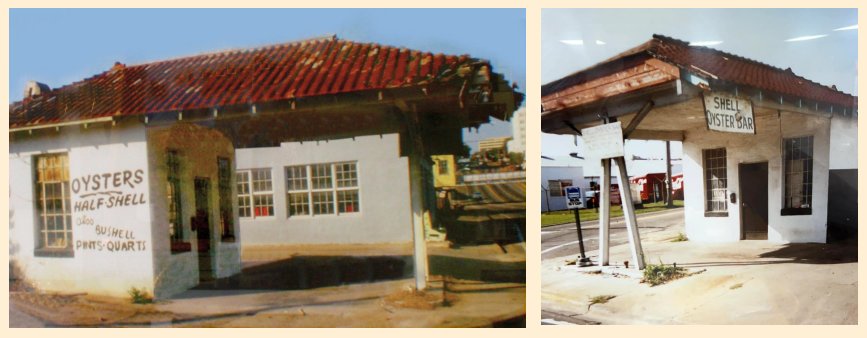 The Original Shell Oyster Bar Building
Shell Oyster Bar Today Venturing down South Monroe Street the one stop you had to make for lunch was 1319 S. Monroe right across the street from the Coca Cola plant… at Thompson’s Hamburgers. Opened in 1957 by Ralph J. Thompson, it started as Thompson’s Snack Bar. The name was later changed to Hamburger King then Thompson’s Hamburgers. Thompson’s soon became a favorite to locals and visitors. Before Tallahassee had Whataburger’s, there was Thompson’s. The big meaty burgers were piled high with lettuce and tomato and mayonnaise on a soft bun that took two hands to hold. 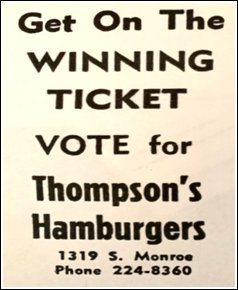
|
Kent Thompson's ![]() e-mail
e-mail
